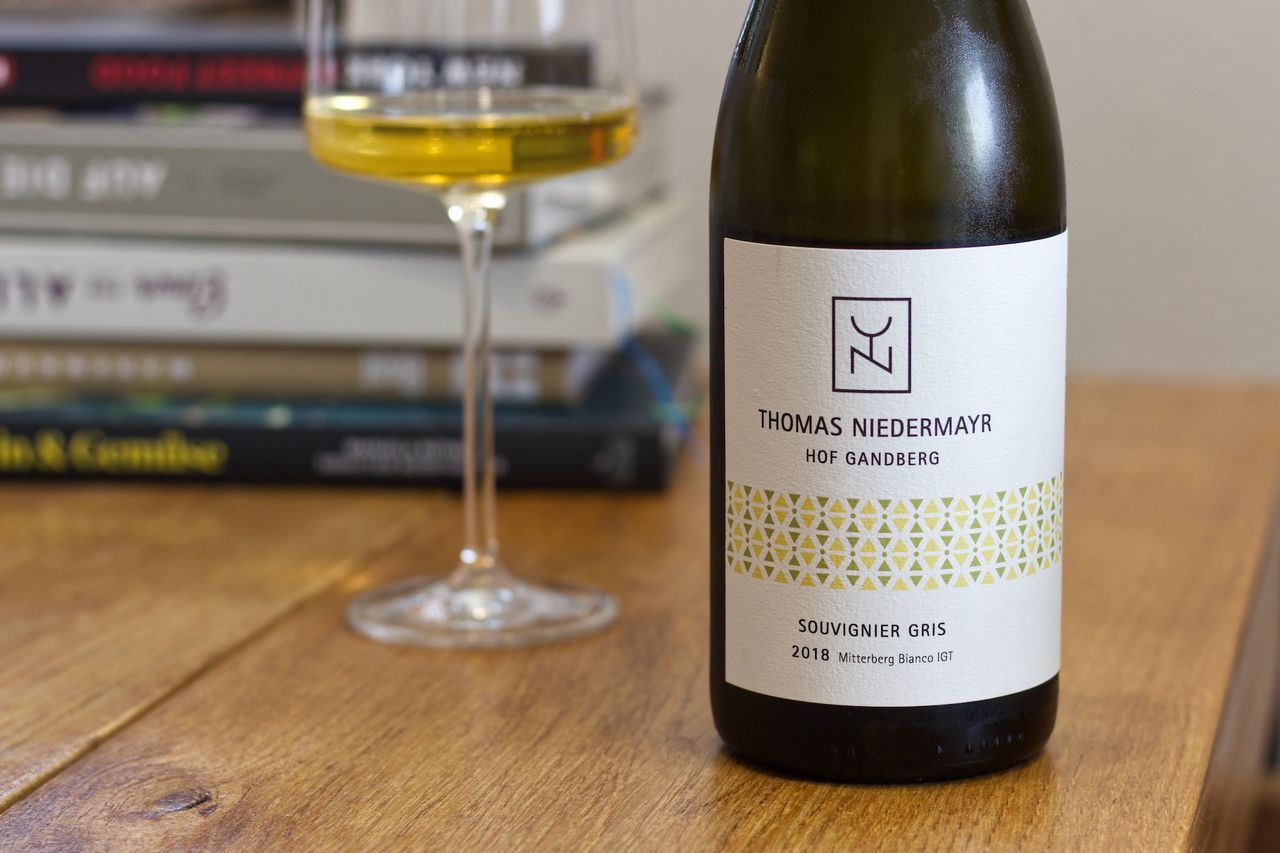Thomas Niedermayr - Souvignier Gris 2018
To conclude the small PiWi series, we have a Souvignier Gris 2018 from South Tyrol by Thomas Niedermayr.

At the end of the small discovery tour through the world of PiWis, after the Johanniter from Poland, we dare once again to look beyond the German border. Thomas Niedermayr took over his winery from his father in 2012. He, in turn, started practicing organic farming back in the 80s and was thus involved in this topic at a very early stage. Thomas Niedermayr has reduced the interventions in the cellar in addition to the already organic farming. Southwest of Bolzano, above St. Michael, the vines around the Gandberg farm stand at about 500 meters above sea level. The climate here is also characterized by the so-called ice holes. The temperature in these areas is locally much lower than in the other surroundings.
The fungus-resistant grape varieties, which are grown here on about 2 hectares, cope well with the climate. In addition to the existing varieties, the Niedermayrs themselves are working on breeding new resistant grape varieties. Today we are drinking a bottle of Souvignier Gris from 2018. The vines for this wine are located in Eppan between 270 and 400 meters above sea level. After hand harvesting, of course, the wine is fermented spontaneously and then aged for a year on its lees in used wood and steel before being bottled without filtration or fining.
The wine smells of intense yellow fruit. There is lychee and very ripe peach. But there is also a note of hay and herbs. This is spicy but also a bit sweet on the nose due to the very ripe fruit. Residual sugar, however, the wine no longer has because it is completely fermented. On the tongue, it then also acts quite differently than I would have expected after the nose. The Souvignier Gris is very dense, intense and above all very substantial and rich in texture. There is a nice acidity but at the back also comes a little bit of alcohol. The 14% are quite a bit of that after all. This is somehow one of my main problems with white PiWi varieties. They quite often have quite a lot of alcohol which they are not able to hide. In this one follows a good portion of juiciness and with all the density and intensity, the wine can hold up well against it.
On the second evening, the nose is more restrained. There is still this very ripe fruit, of course, but it is now joined by a lot of herbal spice. The wine lingers much longer than on the first evening and can now hide the alcohol much better. Where I have a super hard time is estimating how this will develop. As it is now, I think it’s really good. But if it becomes even more ripe in fruit and perhaps loses its contour, then it could become too much. Or it gains in complexity and spice and keeps the freshness. No idea. Today, with air at least, it gets a nice smoky spice that rounds out the fruit great. This is as it is now an intense, spicy, yellow-fruited Piwi with a really strong mouthfeel and lots of length. I think this is a good conclusion to our discovery tour and I will also mentally add Souvignier Gris to the list for further observation.